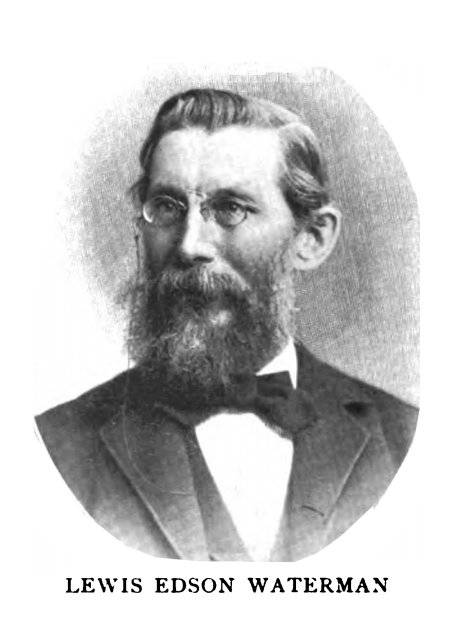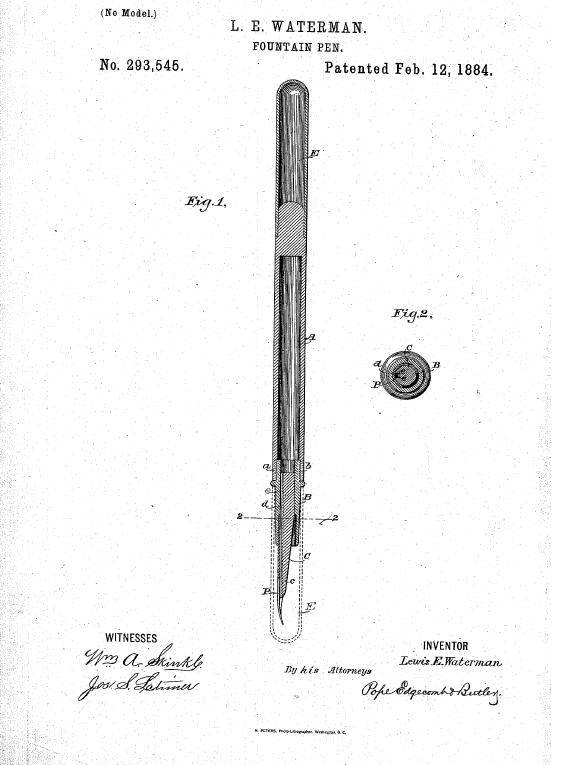Lewis Waterman – Inventor of Fountain Pen
Lewis Edson Waterman (1837 - 1901) was the inventor of the capillary feed fountain pen and the founder of Ideal Pen Company and Waterman Pen Company.
Waterman was born in Decatur, New York, on November 18, 1837. We don’t know much about his early life, but he was a shorthand instructor, a book salesperson, and an insurance agent.
Legend says that on his last job, while trying to sign an insurance contract with a customer, his fountain pen gave in and leaked all over the contract. Legend says further that while Waterman searched for a new contract, the customer signed a deal with another agent, and Waterman lost a sale. This legend is just that - a legend. But the truth is that in 1883, Waterman improved a fountain pen. He noticed that fountain pens of the time didn’t have any control over the flow of ink, which caused the leaking of ink. He and his brother Elijah started experimenting with different tubes. In the end, they found out that if the air is let into an ink reservoir of a fountain pen through capillary pipes, the ink will flow out of the reservoir under the force of gravity but slowly enough not to cause leaking.
On 12th February 1884, Waterman patented a fountain pen in his name and, at first, assembled pens himself. He sold them behind a cigar shop and gave a 5-year guarantee on them. In 1885, he partnered with Asa Shipman and founded The Ideal Pen Company, but that didn’t last. He again tried alone but later needed to raise capital and founded the 1887 Waterman Pen Company. 1899 he modified the nib of the pen. The problem was that a bubble would form when a pen was nearly empty. He solved this problem by making overflow pockets on either side of the channels in the feed. Waterman didn’t just work on fountain pens. He, for instance, also invented a successful method for preserving and condensing grape juice.
When he sold his fountain pens, he had a no-questions returns policy because he was sure of his product. And he had reasons to be. Orders came in from all over the country and from abroad. Business went so well that they produced seven out of ten pens on the market at the end of the 19th century and had to move production as the business grew. Waterman Pen Company exhibited in the ‘Exposition Universelle’ in Paris in 1900.
When Lewis Edson Waterman died in 1901, his nephew Frank D. Waterman took over the business and expanded it even more. He increased sales to 350,000 pens per year. At times, sales dropped, and other manufacturers, like Parker, Sheaffer, and Wahl-Eversharp, appeared on the market. Waterman Pen Company closed in 1954 after years of struggling. Waterman's French subsidiary, Waterman Jif (later known as Waterman S.A.), survived and absorbed what was left of the American company and its British part. Waterman S.A. was acquired by Sanford in 2001 and became a division of Newell Rubbermaid, owner of The Parker Pen Company. British section, now a Parker factory, was closed in 2011, and all production transferred to France.
First, Waterman pens were made of hard rubber and had 14K gold nibs. The number of pens produced in those early years means that these fountain pens can still be found today, and because of the quality of their production, their nibs are prized for their smoothness and flexibility. The most common models from those times are the #12 slip-cap eyedropper, the #52 screw-cap lever-filler, and the #42 retracting-nib safety pen.

